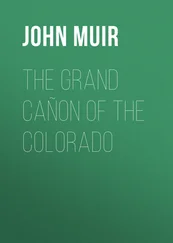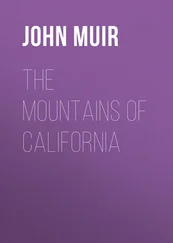John Muir - Travels in Alaska
Здесь есть возможность читать онлайн «John Muir - Travels in Alaska» — ознакомительный отрывок электронной книги совершенно бесплатно, а после прочтения отрывка купить полную версию. В некоторых случаях можно слушать аудио, скачать через торрент в формате fb2 и присутствует краткое содержание. Жанр: Путешествия и география, История, foreign_edu, foreign_antique, foreign_prose, на английском языке. Описание произведения, (предисловие) а так же отзывы посетителей доступны на портале библиотеки ЛибКат.
- Название:Travels in Alaska
- Автор:
- Жанр:
- Год:неизвестен
- ISBN:нет данных
- Рейтинг книги:4 / 5. Голосов: 1
-
Избранное:Добавить в избранное
- Отзывы:
-
Ваша оценка:
- 80
- 1
- 2
- 3
- 4
- 5
Travels in Alaska: краткое содержание, описание и аннотация
Предлагаем к чтению аннотацию, описание, краткое содержание или предисловие (зависит от того, что написал сам автор книги «Travels in Alaska»). Если вы не нашли необходимую информацию о книге — напишите в комментариях, мы постараемся отыскать её.
Travels in Alaska — читать онлайн ознакомительный отрывок
Ниже представлен текст книги, разбитый по страницам. Система сохранения места последней прочитанной страницы, позволяет с удобством читать онлайн бесплатно книгу «Travels in Alaska», без необходимости каждый раз заново искать на чём Вы остановились. Поставьте закладку, и сможете в любой момент перейти на страницу, на которой закончили чтение.
Интервал:
Закладка:
The most extravagantly colored of all the sunsets I have yet seen in Alaska was one I enjoyed on the voyage from Portland to Wrangell, when we were in the midst of one of the most thickly islanded parts of the Alexander Archipelago. The day had been showery, but late in the afternoon the clouds melted away from the west, all save a few that settled down in narrow level bars near the horizon. The evening was calm and the sunset colors came on gradually, increasing in extent and richness of tone by slow degrees as if requiring more time than usual to ripen. At a height of about thirty degrees there was a heavy cloud-bank, deeply reddened on its lower edge and the projecting parts of its face. Below this were three horizontal belts of purple edged with gold, while a vividly defined, spreading fan of flame streamed upward across the purple bars and faded in a feather edge of dull red. But beautiful and impressive as was this painting on the sky, the most novel and exciting effect was in the body of the atmosphere itself, which, laden with moisture, became one mass of color–a fine translucent purple haze in which the islands with softened outlines seemed to float, while a dense red ring lay around the base of each of them as a fitting border. The peaks, too, in the distance, and the snow-fields and glaciers and fleecy rolls of mist that lay in the hollows, were flushed with a deep, rosy alpenglow of ineffable loveliness. Everything near and far, even the ship, was comprehended in the glorious picture and the general color effect. The mission divines we had aboard seemed then to be truly divine as they gazed transfigured in the celestial glory. So also seemed our bluff, storm-fighting old captain, and his tarry sailors and all.
About one third of the summer days I spent in the Wrangell region were cloudy with very little or no rain, one third decidedly rainy, and one third clear. According to a record kept here of a hundred and forty-seven days beginning May 17 of that year, there were sixty-five on which rain fell, forty-three cloudy with no rain, and thirty-nine clear. In June rain fell on eighteen days, in July eight days, in August fifteen days, in September twenty days. But on some of these days there was only a few minutes' rain, light showers scarce enough to count, while as a general thing the rain fell so gently and the temperature was so mild, very few of them could be called stormy or dismal; even the bleakest, most bedraggled of them all usually had a flush of late or early color to cheer them, or some white illumination about the noon hours. I never before saw so much rain fall with so little noise. None of the summer winds make roaring storms, and thunder is seldom heard. I heard none at all. This wet, misty weather seems perfectly healthful. There is no mildew in the houses, as far as I have seen, or any tendency toward mouldiness in nooks hidden from the sun; and neither among the people nor the plants do we find anything flabby or dropsical.
In September clear days were rare, more than three fourths of them were either decidedly cloudy or rainy, and the rains of this month were, with one wild exception, only moderately heavy, and the clouds between showers drooped and crawled in a ragged, unsettled way without betraying hints of violence such as one often sees in the gestures of mountain storm-clouds.
July was the brightest month of the summer, with fourteen days of sunshine, six of them in uninterrupted succession, with a temperature at 7 A.M. of about 60°, at 12 M., 70°. The average 7 A.M. temperature for June was 54.3°; the average 7 A.M. temperature for July was 55.3°; at 12 M. the average temperature was 61.45°; the average 7 A.M. temperature for August was 54.12°; 12 M., 61.48°; the average 7 A.M. temperature for September was 52.14°; and 12 M., 56.12°.
The highest temperature observed here during the summer was seventy-six degrees. The most remarkable characteristic of this summer weather, even the brightest of it, is the velvet softness of the atmosphere. On the mountains of California, throughout the greater part of the year, the presence of an atmosphere is hardly recognized, and the thin, white, bodiless light of the morning comes to the peaks and glaciers as a pure spiritual essence, the most impressive of all the terrestrial manifestations of God. The clearest of Alaskan air is always appreciably substantial, so much so that it would seem as if one might test its quality by rubbing it between the thumb and finger. I never before saw summer days so white and so full of subdued lustre.
The winter storms, up to the end of December when I left Wrangell, were mostly rain at a temperature of thirty-five or forty degrees, with strong winds which sometimes roughly lash the shores and carry scud far into the woods. The long nights are then gloomy enough and the value of snug homes with crackling yellow cedar fires may be finely appreciated. Snow falls frequently, but never to any great depth or to lie long. It is said that only once since the settlement of Fort Wrangell has the ground been covered to a depth of four feet. The mercury seldom falls more than five or six degrees below the freezing-point, unless the wind blows steadily from the mainland. Back from the coast, however, beyond the mountains, the winter months are very cold. On the Stickeen River at Glenora, less than a thousand feet above the level of the sea, a temperature of from thirty to forty degrees below zero is not uncommon.
Chapter IV
The Stickeen River
The most interesting of the short excursions we made from Fort Wrangell was the one up the Stickeen River to the head of steam navigation. From Mt. St. Elias the coast range extends in a broad, lofty chain beyond the southern boundary of the territory, gashed by stupendous cañons, each of which carries a lively river, though most of them are comparatively short, as their highest sources lie in the icy solitudes of the range within forty or fifty miles of the coast. A few, however, of these foaming, roaring streams–the Alsek, Chilcat, Chilcoot, Taku, Stickeen, and perhaps others–head beyond the range with some of the southwest branches of the Mackenzie and Yukon.
The largest side branches of the main-trunk cañons of all these mountain streams are still occupied by glaciers which descend in showy ranks, their messy, bulging snouts lying back a little distance in the shadows of the walls, or pushing forward among the cotton-woods that line the banks of the rivers, or even stretching all the way across the main cañons, compelling the rivers to find a channel beneath them.
The Stickeen was, perhaps, the best known of the rivers that cross the Coast Range, because it was the best way to the Mackenzie River Cassiar gold-mines. It is about three hundred and fifty miles long, and is navigable for small steamers a hundred and fifty miles to Glenora, and sometimes to Telegraph Creek, fifteen miles farther. It first pursues a westerly course through grassy plains darkened here and there with groves of spruce and pine; then, curving southward and receiving numerous tributaries from the north, it enters the Coast Range, and sweeps across it through a magnificent cañon three thousand to five thousand feet deep, and more than a hundred miles long. The majestic cliffs and mountains forming the cañon walls display endless variety of form and sculpture, and are wonderfully adorned and enlivened with glaciers and waterfalls, while throughout almost its whole extent the floor is a flowery landscape garden, like Yosemite. The most striking features are the glaciers, hanging over the cliffs, descending the side cañons and pushing forward to the river, greatly enhancing the wild beauty of all the others.
Gliding along the swift-flowing river, the views change with bewildering rapidity. Wonderful, too, are the changes dependent on the seasons and the weather. In spring, when the snow is melting fast, you enjoy the countless rejoicing waterfalls; the gentle breathing of warm winds; the colors of the young leaves and flowers when the bees are busy and wafts of fragrance are drifting hither and thither from miles of wild roses, clover, and honeysuckle; the swaths of birch and willow on the lower slopes following the melting of the winter avalanche snow-banks; the bossy cumuli swelling in white and purple piles above the highest peaks; gray rain-clouds wreathing the outstanding brows and battlements of the walls; and the breaking-forth of the sun after the rain; the shining of the leaves and streams and crystal architecture of the glaciers; the rising of fresh fragrance; the song of the happy birds; and the serene color-grandeur of the morning and evening sky. In summer you find the groves and gardens in full dress; glaciers melting rapidly under sunshine and rain; waterfalls in all their glory; the river rejoicing in its strength; young birds trying their wings; bears enjoying salmon and berries; all the life of the cañon brimming full like the streams. In autumn comes rest, as if the year's work were done. The rich hazy sunshine streaming over the cliffs calls forth the last of the gentians and goldenrods; the groves and thickets and meadows bloom again as their leaves change to red and yellow petals; the rocks also, and the glaciers, seem to bloom like the plants in the mellow golden light. And so goes the song, change succeeding change in sublime harmony through all the wonderful seasons and weather.
Читать дальшеИнтервал:
Закладка:
Похожие книги на «Travels in Alaska»
Представляем Вашему вниманию похожие книги на «Travels in Alaska» списком для выбора. Мы отобрали схожую по названию и смыслу литературу в надежде предоставить читателям больше вариантов отыскать новые, интересные, ещё непрочитанные произведения.
Обсуждение, отзывы о книге «Travels in Alaska» и просто собственные мнения читателей. Оставьте ваши комментарии, напишите, что Вы думаете о произведении, его смысле или главных героях. Укажите что конкретно понравилось, а что нет, и почему Вы так считаете.












